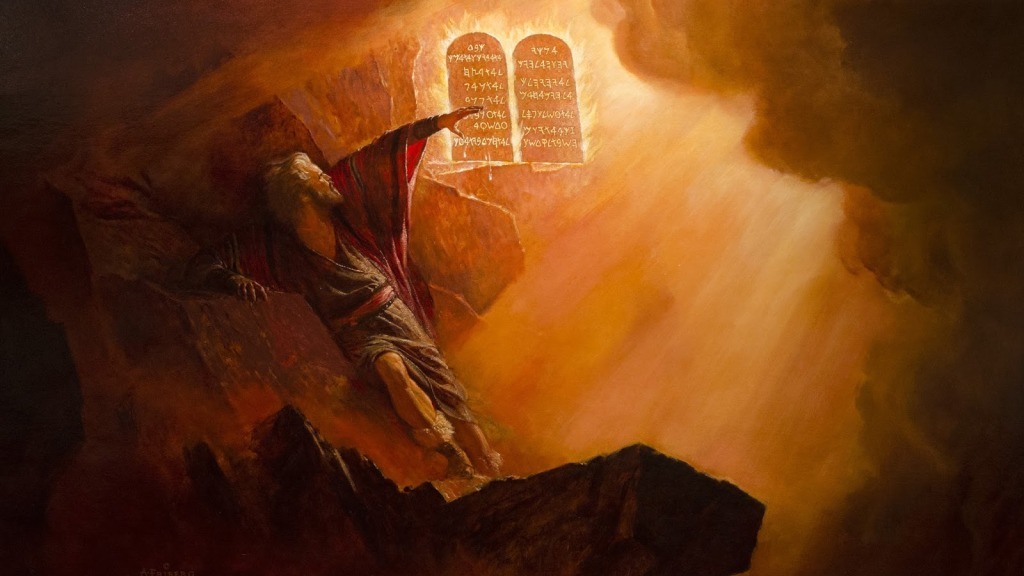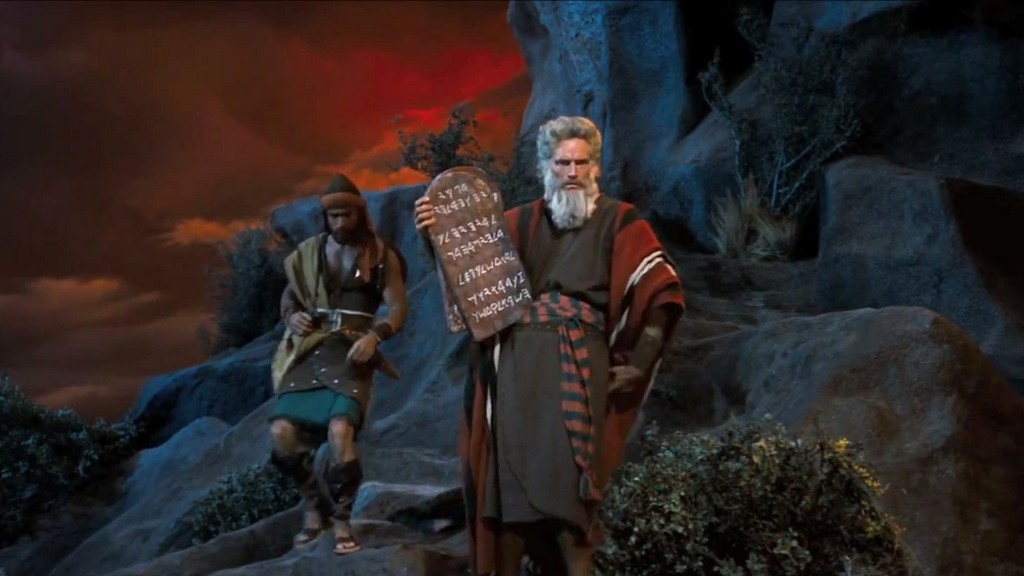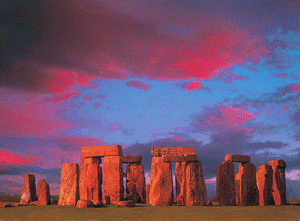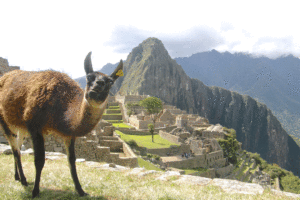Древняя мраморная плита с девятью заповедями Моисея и одной – самаритян продана на аукционе в США за $850 тысяч. Древнейшая известная копия десяти заповедей – мраморная скрижаль, на которой заповеди высечены самаритянским письмом – продана с аукциона Heritage в Калифорнии за 850 тысяч долларов.
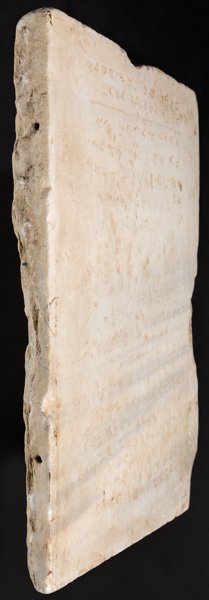 Стартовая цена раритета составляла почти в четыре раза меньше – 220 тысяч долларов.
Стартовая цена раритета составляла почти в четыре раза меньше – 220 тысяч долларов.
На прямоугольном камне весом более 50 кг размером 63,5 на 57 см высечено 20 строк на диалекте, отличительные формы письма которого и пунктуация характерны для самаритянских надписей от IV до VIII веков нашей эры.
Интересно, что в тексте отсутствует заповедь “Не произноси имени Господа Бога твоего всуе”. Вместо нее добавлена самаритянская заповедь о строительстве храма на священной для самаритян горе Гризим в исторической области Самария, расположенной ныне в пределах Палестинской автономии рядом с городом Наблус (Шхем) на Западном берегу реки Иордан.
Скрижаль, датируемая приблизительно IV веком нашей эры, была обнаружена в 1913 году во время земляных работ по прокладке железнодорожного полотна в Палестине, в южной части средиземноморской Прибрежной равнины недалеко от города Явне.
Рабочие, обнаружившие ее, не придали значения находке и продали местному арабу, который установил мраморную доску у порога в свой дом. Скрижали пролежали там три десятилетия, и часть высеченных строк стерлась под ногами ступавших на них людей.
В 1943 году камень попал к историку Каплану, который совместно со знатоком истории самаритян Ицхаком Бен-Цви, основавшим Институт исследования еврейских общин, представил скрижали мировой общественности в опубликованной ими в 1947 году статье. Кстати, Ицхак Бен-Цви, родившийся в Российской империи в городе Полтава, впоследствии стал вторым президентом Израиля (1952-1963 годы).
В 1990-х годах скрижали приобрел известный израильский антиквар и специалист по эпиграфике Роберт Дойч, который в начале 2000-х проходил по делу о подделке надписи на погребальном ковчеге “брата Господня” Иакова.
Несмотря на то что мраморная плита была признана национальным достоянием Израиля, в 2005 году Дойч получил разрешение от Управления древностей Израиля на вывоз ее в США при условии, что скрижаль будет выставляться в публичном музее.
Так как это условие по-прежнему остается в силе, то купить раритет могла либо крупная государственная просветительская структура с намерением регулярно экспонировать эту историческую ценность, либо частное или юридическое лицо с той же целью, либо же частный покупатель, который обязуется вернуть скрижали в Израиль. На данный момент не известно, кто именно приобрел мраморную плиту с заповедями. Покупатель предпочел остаться анонимным.
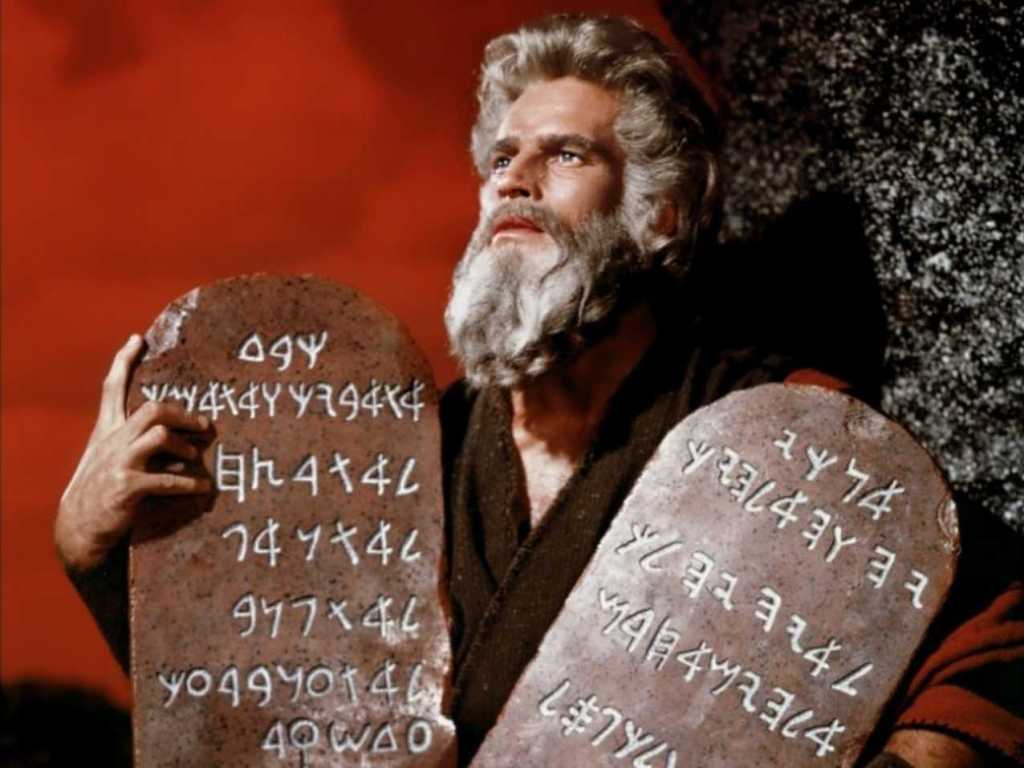
Ковчег Завета, якобы хранящийся в Эфиопии, не покажут людям: эфиопский Патриарх подтвердил, что святыня действительно надежно спрятана в одном из монастырей Эфиопии, но информация о предстоящем ее музейном показе, ошибочно приписанная ему итальянскими СМИ, является абсолютной фальшивкой.
Библейский Ковчег Завета (иногда называемый “священный Грааль”), футляр, в который, согласно преданию, пророк Моисей уложил скрижали с 10 заповедями, врученные ему на горе Синай, не будет выставлен на всеобщее обозрение в музее. Таким заявлением Патриарх Эфиопской православной церкви (ЭПЦ) Паулос опроверг сообщения, появившиеся в итальянской прессе, сообщает ИТАР-ТАСС.
Патриарх официально подтвердил, что святыня действительно надежно спрятана в одном из монастырей Эфиопии, но информация о предстоящем ее музейном показе, ошибочно приписанная ему итальянскими СМИ, является абсолютной фальшивкой. По одной из версий, эта реликвия хранится в Эфиопии с 642 г. до н.э.
Согласно появившимся в Италии сообщениям, руководство ЭПЦ якобы высказало готовность экспонировать Ковчег Завета в одном из музеев на севере Эфиопии. Предположительно, утечка такой информации могла произойти на прошедшем недавно в Риме саммите религиозных лидеров мира, где эфиопскую делегацию возглавлял Патриарх Паулос.
Передавая из Аддис-Абебы это опровержение, итальянское информационное агентство АНСА указывает, что “на пространстве Африканского Рога по меньшей мере 50 тыс. предполагаемых “Ковчегов” укрыты в таком же количестве местных храмов”.
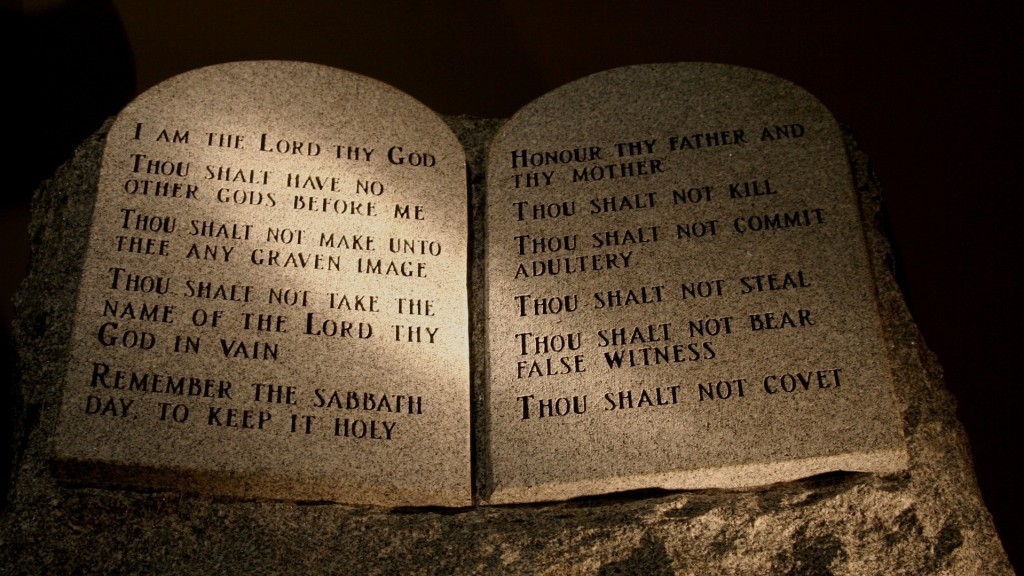
The Yavneh Ten Commandments Stone
JUDAEA. Late Roman-Byzantine Era, circa 300-830 CE. Marble Decalogue Inscription. A roughly square slab of white marble, 25 by 22.5 inches (63.5 X 57 cm), and weighing 115 lbs (52 kg), inscribed with 20 lines of Paleo-Hebrew characters rendered in the Samaritan dialect, with distinctive letter forms and punctuation common to Samaritan inscriptions from the fourth through eighth centuries of the Common Era. Though the middle portion of the inscription is heavily worn (probably by foot traffic – see the account below), the first and last six lines of the inscription are clear and distinct, and the middle eight lines legible enough to be read under oblique lighting.
The 20 lines of writing each line contain between 11 and 15 characters, with side margins of about 10 centimeters. The letters vary between one and two centimeters; consistent with the Samaritan writing style, they are separated by a central dot or colon. Spacing is inconsistent and some of the letters (for example the letter ? or Hey) are rendered in different forms in different lines, giving the impression that the engraver was not a specialist in stone inscriptions. Some letters near the top of the dedication were erased and re-engraved: Apparently the writer changed his mind or received new instructions partway into the project.
The first two lines form a dedication, the second line of which is underlined to distinguish the opening from the 18 subsequent lines. These contain the Mosaic 10 Commandments in the form used by the Samaritans, with an additional admonition to build a temple on the holy mountain of Gerizim, now located near the West Bank city of Nablus.
Translated from the Samaritan dialect of Hebrew, the line-by-line inscription runs as follows:
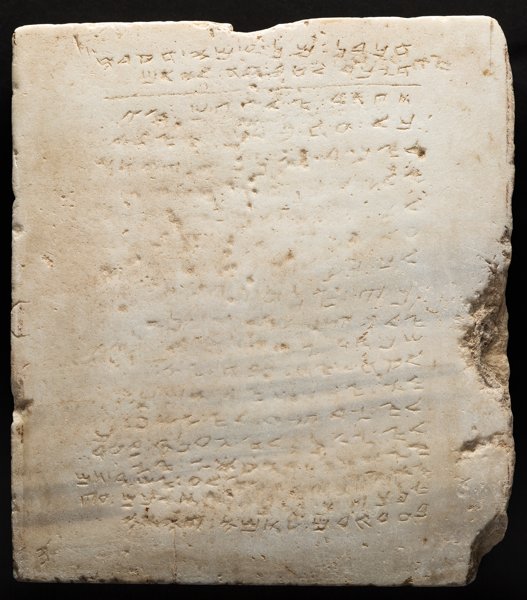
1. Dedicated in the name of Korach
2 . I will call you to remember for goodness forever
3. God spoke
4 . all these words
5 . saying I am the Lord
5 . your God you shall not have
7 . for yourself other Gods
8 . besides me; you shall not make
9 . for yourself a sculptured image or any likeness;
10 . for I the Lord
11 . your God am an impassioned God;
12 . Remember the Sabbath day
13 . keep it holy; honor
14 . your father and your mother;
15 . you shall not murder; you shall not commit adultery;
16 . you shall not steal; you shall not bear [false witness] against your neighbor
17 . you shall not covet; you shall erect
18 . these stones that
19 . I am commanding you today
20 . on Mount Gerizim rise up to God
From The Living Torah Museum Collection; acquired from Archeological Center, Israel, 2003; discovered near Yavneh, now in Israel, then under Ottoman rule on the Palestinian coast, in 1913.
DISCOVERY AND PROVENANCE: The details of the Yavneh Stone’s discovery are related in an article by Y. Kaplan and Yitzhak Ben-Zvi in the 1947 Journal of the Jewish Palestine Exploration Society. According to Mr. Kaplan’s account, this extraordinary artifact was rediscovered in 1913, during the excavation of a railroad line along the southern coastal plain of Palestine. The discovery was made near Yavneh, an historic city called Jabneel in the Hebrew Bible. The workmen who found it did not recognize its importance and either sold or gave it to a local Arab man of some means, who set the stone into the threshold of a room leading to his inner courtyard, with the inscription facing up. Due to foot traffic, several words on the center left side of the tablet were blurred over time.
In 1943, thirty years after his father acquired it, the man’s son sold the stone to Mr. Kaplan, who immediately recognized its importance as an extremely rare “Samaritan Decalogue,” one of five such extant stone inscriptions dating to before the Muslim invasion of the seventh century CE.
Upon Mr. Kaplan’s request, tablet was examined by Yitzhak Ben-Zvi, a noted scholar of Jewish history, who specialized in studying the Samaritans. He would later go on to become the second and longest-serving President of Israel (1952-1963).
The Yavneh Stone remained in Mr. Kaplan’s collection until the 1990s, when it was acquired by the noted Israeli antiquities dealer Robert Deutsch. In 2005, it was obtained by Rabbi Saul Deutsch (no relation), founder and operator of the Living Torah Museum in Brooklyn, New York. Export of this “National Treasure” from Israel was approved under a special permit issued by the Israel Antiquities Authority, on condition that it be placed on public display “where all can view it and enjoy,” a condition that still pertains (see special conditions pertaining to this lot on title page).
HISTORICAL CONTEXT: In his 1947 article, Mr. Ben-Zvi made the following observations about the stone: “You shall not take the name of God your Lord in vain is missing. This commandment was omitted for an unknown reason…. If you take “I am the lord” as the first commandment, it would seem there are indeed 10 commandments listed, including the final one to “raise up” (a temple) on Mount Gerizim-the holy mountain of the Samaritans.
“According to the information that Mr. Kaplan received, the tablet was buried east of the central Jama Mosque…The closeness of the location to the central mosque leads to the assumption that there is a connection between the tablet and the mosque… Various documents that were kept in the central mosque inform us that it was established between 1292 and 1373; that is to say, after the Christian Crusaders. Prior to that, a Latin Christian church built by the Crusaders stood in its place following their conquest of that location in 1142. They besieged Yavneh and called it Evlin. Later, on top of the ruins of the church, the central mosque was built. The local farmers preserved this memory and this mosque is known until today by the name K’nissah, which is a special name in Arabic for a Christian church. A Jewish synagogue is called K’niss in the masculine form.
“One has to wonder if there could have been an ancient Samaritan synagogue that once stood in the place of the mosque during the time of the Samaritans in Yavneh. Perhaps the Crusaders destroyed it and built a Christian church in its place? This would not be the only time in history
when a Christian church was built on the ruins of a Samaritan synagogue. For example, remnants of Samaritan inscriptions were found in Siaga on Mount Nebo amongst the ruins of a Byzantine Christian church. We can deduce from this that the inscriptions likely belonged to an ancient Samaritan synagogue that existed there.
“It is important to mention that the last verse in the inscription Kumah Adonai from the weekly Torah reading Vayehi Binsoa HaAron (“as the ark is traveling”) is also found in the tablet in the Green Mosque in Shechem. The Green Mosque was built at the end of the Byzantine era and that verse was corrected in the Muslim era. This knowledge leads us to believe that the tablet in Yavneh also dates from the Byzantine era, circa A.D. 300 to 700.”
Recent scholarship has confirmed most of Ben-Zvi’s observations about the stone, while adding a few caveats. Joseph Naveh has questioned whether Samaritan Decalogue inscriptions were bound exclusively to synagogues, or may have belonged to private homes as well (Oxford, BAR, 1989). Samaritan scholar John Bowman dates the Yavneh stone to the early Islamic occupation period, circa 640-830 CE, before the anti-Samaritan pogroms of the Abbasids (see following article), while other scholars continue to argue for an earlier Byzantine dating.
SPECIAL NOTICE: The Israel Antiquities Authority (IAA) granted export approval for this piece in perpetuity to the Living Torah Museum in a letter dated 20 March, 2005. By terms of the letter, the museum must receive permission from the IAA for any future sale of the artifact. In subsequent contacts, the IAA has confirmed that the agency will approve sale to a third party. The conditions for such a sale are as follows:
(1) A major institutional buyer (public museum, library, nonprofit, institute of higher learning, etc.) with a museum or facility that is open to the general public may acquire it with the intention of putting it on prominent display in an appropriate setting; or
(2) A private individual or nonprofit group may acquire the piece with the declared intention of donating it, or placing it on permanent loan, to a public museum or facility to be put on display, as outlined above; or
(3) An institutional or private buyer may acquire the stone with the declared intention of placing it on “tour” to different public museums or institutions around the world, to be placed on display, for the educational benefit and enjoyment of all, or
(4) A private or institutional buyer may acquire the stone with the intention of returning it to Israel.
